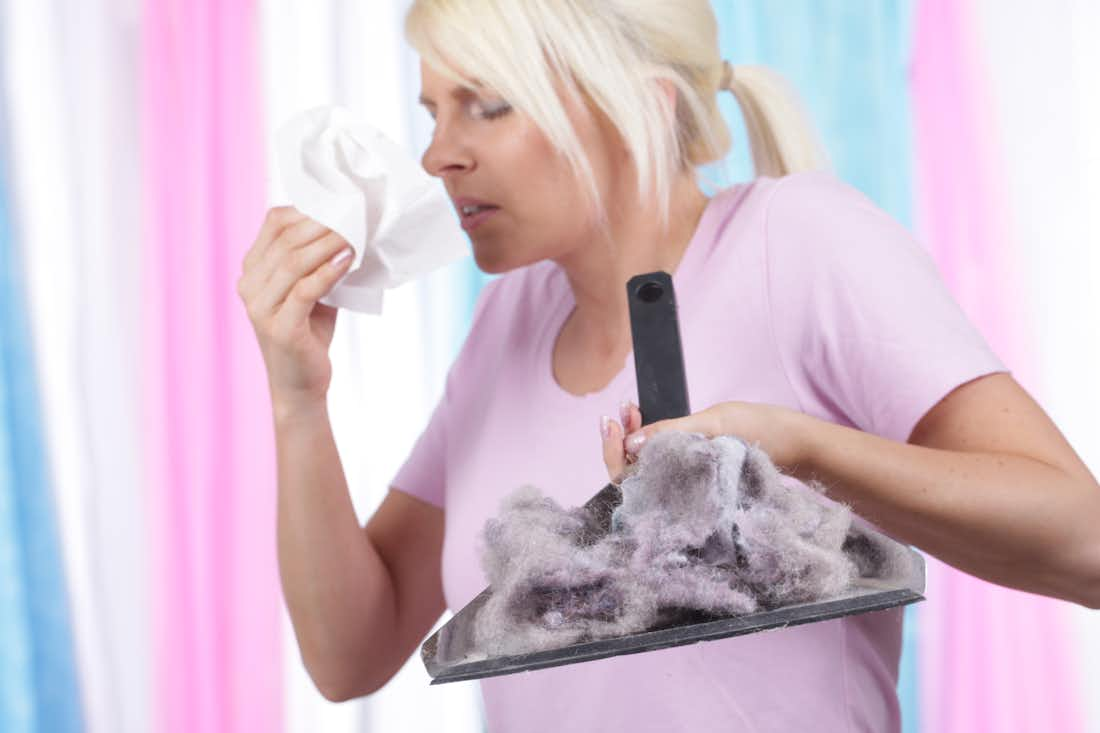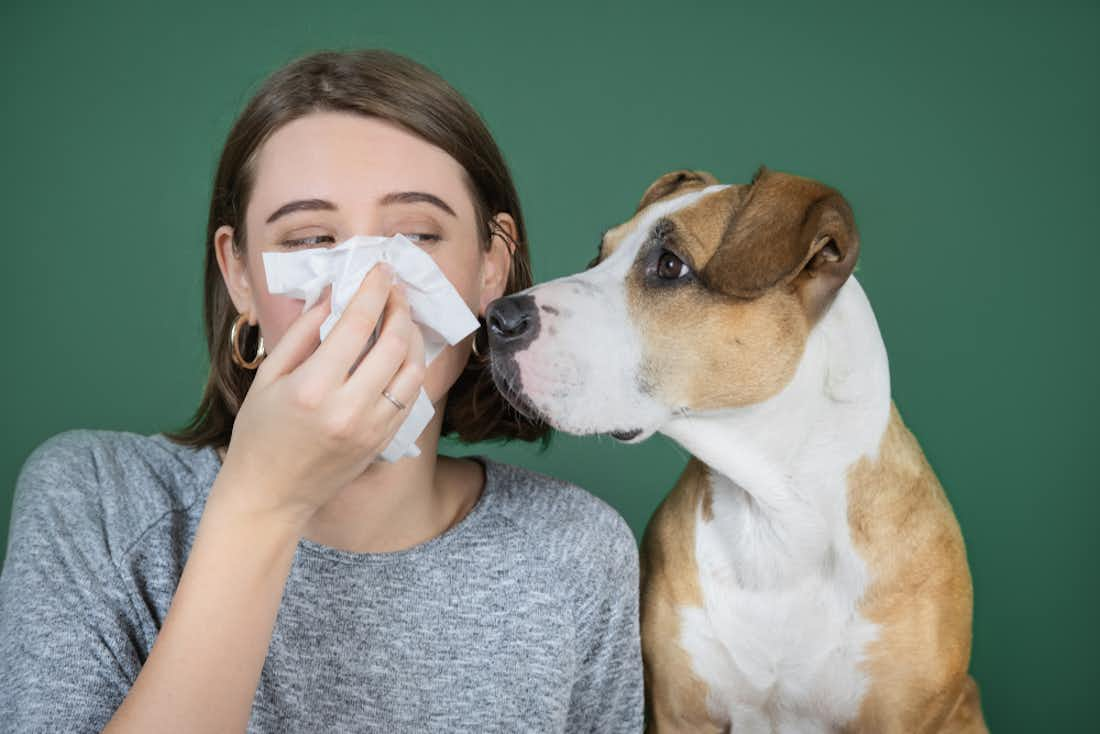Nov 11, 2021
Everything You Need to Know About Ragweed Allergies
5 minute read
Ragweed allergies are very common, affecting around one out of five people in the United States. Ragweed pollen tends to cause the worst symptoms in late summer and early fall, lasting from early August through September and into October.
For people with seasonal allergies, ragweed season often triggers hay fever symptoms, including coughing, sneezing, a runny nose, itchy eyes, and more. When ragweed pollen counts reach their peaks throughout the United States, allergy sufferers can start dealing with symptoms that disrupt their everyday lives and make it hard to function normally.
If ragweed allergies are making you miserable, you've come to the right place. In this post, we'll cover everything you need to know about managing ragweed allergy symptoms and finding long-term relief.
What Is Ragweed?
Ragweeds are plants in the aster family that grow throughout the United States. These flowering plants produce pollen in massive quantities, with one ragweed plant releasing around a billion grains of pollen per season.
Ragweed is most abundant on the East coast of the United States and in the Midwest. In these areas, winds are often high in the late summer and early fall, and gusts can carry ragweed pollen for miles, causing symptoms far from where it grows.
What Causes Ragweed Allergies?
Ragweed allergy symptoms develop when your immune system overreacts to exposure to the plant's pollen. While ragweed pollen is harmless, an oversensitive immune system can interpret exposure to the pollen grains as a threat. During ragweed pollen season, your immune system will be releasing chemicals called histamines, which trigger an inflammatory response.
Seasonal allergic rhinitis, better known simply as seasonal allergies, often causes symptoms due to exposure to multiple allergens. That means that you might be allergic to grass pollen, ragweed pollen, pet dander, and other common allergy triggers at the same time. The best way to determine what allergens are causing your symptoms is to get either a skin prick test or a blood test.
Common Ragweed Allergy Symptoms
If you are allergic to ragweed pollen, you're likely to experience hay fever symptoms due to exposure. These symptoms include:
- Sneezing
- Itchy Eyes
- Runny Nose
- Sore Throat
- Nasal congestion
While some of these symptoms may mimic the symptoms of various viruses, allergies aren't considered a sickness. If you have asthma alongside your seasonal allergies, you might experience a flare-up in your symptoms due to exposure to pollen.
Ragweed and Oral Allergy Syndrome
When ragweed season is in full swing, some people experience symptoms of an itchy mouth, throat, or tongue after eating certain foods. This phenomenon is known as oral allergy syndrome, and the following foods can trigger it:
- Melons Like Watermelon, Honeydew, and Cantaloupe
- Cucumber
- Zucchini
- Bananas
- Honey
- Certain Teas, Especially Chamomile tea
- Sage
- Sunflower seeds
Avoiding these foods during ragweed season can help you avoid symptoms. In addition, eating heated or cooked versions of these foods can also help.
Finding Relief From Ragweed Allergies
If you're suffering from ragweed allergies, you can take several different routes to get the relief you need. The first step in dealing with ragweed allergy symptoms is often to visit an allergist, who can help you better understand how to proceed with treatment.
Once your allergist confirms that ragweed is the cause of your symptoms, you'll most likely be presented with a few treatment options, including:
- Over-the-counter antihistamines
- Prescription allergy relief medications
- Allergy shots
- Sublingual immunotherapy
In addition to a few treatment options, it's always a good idea to make sure your air conditioner unit in your home is cleaned regularly. Adding a HEPA filter to your air conditioner may also help keep unwanted bacteria and irritants out of the air around you.
Your allergist can talk over each of these treatment options with you at length, but you'll find a brief description of them below.
Over-The-Counter Allergy Medication
If your ragweed allergy symptoms aren't particularly severe, you may find relief through over-the-counter medicine. Medications like Claritin, Allegra, and Zyrtec are all available without a prescription, and they can help with ease from the milder symptoms of ragweed allergy.
However, if your ragweed allergies are more severe, you may need to take a different route when it comes to treatment. Your allergist might start you out with a recommendation for over-the-counter meds, then switch the treatment strategy if your symptoms don't go away.
Prescription Allergy Medication
When ragweed allergies are more severe, allergists often recommend that their patients take prescription medication for relief. Nasal steroid sprays, prescription-grade decongestants, and other medications are all commonly prescribed for severe ragweed allergies. These meds are more potent than you could get without a prescription and target more stubborn symptoms more effectively.
Allergy Shots
Subcutaneous allergy immunotherapy, also known as allergy shots, is one of the most effective treatments for allergies to all the different types of ragweed. Shots are a long-term treatment strategy, and they require frequent visits to your allergist over several months or years. However, shots have the potential to eliminate the need for other forms of allergy medication, saving you money and effort in the long run.
While allergy shots can be effective, they also have the potential to cause side effects. Since subcutaneous immunotherapy exposes your immune system to small amounts of your allergy triggers, there is always a potential for an allergic reaction to occur when you get a shot. For this reason, patients who receive allergy shots have to be carefully overseen by an allergist.
Sublingual Immunotherapy
Sublingual immunotherapy is a treatment that works similarly to allergy shots, targeting the root cause of your symptoms rather than just the symptoms themselves. However, this type of immunotherapy is needle-free – it involves drops or tablets taken orally or placed under the tongue.
Like allergy shots, sublingual immunotherapy treatments have been found to have a major positive impact on symptoms in the long run. In addition, you don't need to visit your allergist each time you need treatment – you can take sublingual immunotherapy drops or tablets at home.
The Bottom Line on Ragweed Allergies
If you're suffering from ragweed allergies, don't give up on finding relief! There are multiple treatment options to try, and our allergists are ready to help you decide which one is right for you. To get started with tackling your ragweed allergy symptoms, online consultation with one of our allergists today.
Sources:
7 Things You May Not Know About Ragweed Pollen Allergy | AAFA
Oral Allergy Syndrome Symptoms, Diagnosis & Treatment | AAAAI



